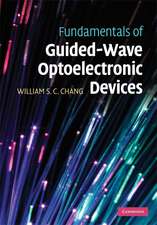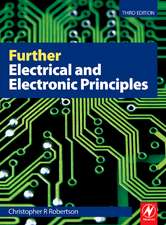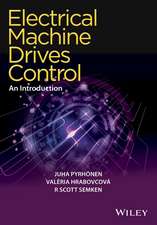Theory of Defects in Semiconductors: Topics in Applied Physics, cartea 104
Editat de David A. Drabold, Stefan Estreicheren Limba Engleză Hardback – 18 oct 2006
| Toate formatele și edițiile | Preț | Express |
|---|---|---|
| Paperback (1) | 1217.58 lei 6-8 săpt. | |
| Springer Berlin, Heidelberg – 22 noi 2010 | 1217.58 lei 6-8 săpt. | |
| Hardback (1) | 1221.38 lei 6-8 săpt. | |
| Springer Berlin, Heidelberg – 18 oct 2006 | 1221.38 lei 6-8 săpt. |
Din seria Topics in Applied Physics
-
 Preț: 426.94 lei
Preț: 426.94 lei - 18%
 Preț: 1400.06 lei
Preț: 1400.06 lei -
 Preț: 434.75 lei
Preț: 434.75 lei - 18%
 Preț: 1558.20 lei
Preț: 1558.20 lei - 18%
 Preț: 783.20 lei
Preț: 783.20 lei - 18%
 Preț: 730.65 lei
Preț: 730.65 lei -
 Preț: 386.00 lei
Preț: 386.00 lei -
 Preț: 387.96 lei
Preț: 387.96 lei - 18%
 Preț: 1233.06 lei
Preț: 1233.06 lei - 18%
 Preț: 1224.06 lei
Preț: 1224.06 lei - 18%
 Preț: 1386.30 lei
Preț: 1386.30 lei - 18%
 Preț: 2101.95 lei
Preț: 2101.95 lei - 18%
 Preț: 2096.91 lei
Preț: 2096.91 lei - 18%
 Preț: 955.88 lei
Preț: 955.88 lei - 18%
 Preț: 1227.21 lei
Preț: 1227.21 lei - 18%
 Preț: 1230.03 lei
Preț: 1230.03 lei - 18%
 Preț: 1386.92 lei
Preț: 1386.92 lei -
 Preț: 392.60 lei
Preț: 392.60 lei - 18%
 Preț: 1830.65 lei
Preț: 1830.65 lei - 18%
 Preț: 1249.45 lei
Preț: 1249.45 lei - 18%
 Preț: 1836.63 lei
Preț: 1836.63 lei - 24%
 Preț: 1178.23 lei
Preț: 1178.23 lei - 18%
 Preț: 964.71 lei
Preț: 964.71 lei - 18%
 Preț: 943.57 lei
Preț: 943.57 lei - 18%
 Preț: 949.10 lei
Preț: 949.10 lei - 18%
 Preț: 1217.58 lei
Preț: 1217.58 lei - 18%
 Preț: 959.19 lei
Preț: 959.19 lei - 18%
 Preț: 943.43 lei
Preț: 943.43 lei -
 Preț: 391.61 lei
Preț: 391.61 lei - 18%
 Preț: 1125.40 lei
Preț: 1125.40 lei
Preț: 1221.38 lei
Preț vechi: 1489.49 lei
-18% Nou
Puncte Express: 1832
Preț estimativ în valută:
233.74€ • 241.47$ • 194.53£
233.74€ • 241.47$ • 194.53£
Carte tipărită la comandă
Livrare economică 25 martie-08 aprilie
Preluare comenzi: 021 569.72.76
Specificații
ISBN-13: 9783540334002
ISBN-10: 3540334009
Pagini: 312
Ilustrații: XIV, 295 p. 60 illus.
Dimensiuni: 155 x 235 x 19 mm
Greutate: 0.55 kg
Ediția:2007
Editura: Springer Berlin, Heidelberg
Colecția Springer
Seria Topics in Applied Physics
Locul publicării:Berlin, Heidelberg, Germany
ISBN-10: 3540334009
Pagini: 312
Ilustrații: XIV, 295 p. 60 illus.
Dimensiuni: 155 x 235 x 19 mm
Greutate: 0.55 kg
Ediția:2007
Editura: Springer Berlin, Heidelberg
Colecția Springer
Seria Topics in Applied Physics
Locul publicării:Berlin, Heidelberg, Germany
Public țintă
ResearchCuprins
1. Defect Theroy: An Armchair History.- 2. Supercell Methods for Defect Calculations.- 3. Marker-Method Calculations for Electrical Levels Using Gaussian-orbital Basis-sets.- 4. Dynamical Matrices and Free Energies.- 5. The Calculation of Free Energies in Semiconductors: Defects, Transitions and Phase Diagrams.- 6. Quantum Monte Carlo Techniques and Defects in Semiconductors.- 7. Quasiparticle Calculations for Point Defects at Semiconductor Surfaces.- 8. Multiscale Modelling of Defects in Semiconductors: A Novel Molecular Dynamics Scheme.- 9. Empirical Molecular Dynamics: Possibilities, Requirements, and Limitations.- 10. Defects in Amorphous Semiconductors: Amorphous Silicon.- 11. Light-induced Effects in Amorphous and Glassy Solids.
Recenzii
From the reviews:
"The silicon technologies and their successors … owe much of their power to control of defects and dopants. … it might be suitable for a graduate course, and that it would be appropriate for advanced researchers in physics, chemistry, materials science and engineering, and that it might be a convenient guide for the experimentalist … . a specialist course book for theory graduate students ... . The hands-on theorist will find the various special topics helpful … ." (Prof. M. Stoneham, Contemporary Physics, Vol. 48 (3), 2007)
"The silicon technologies and their successors … owe much of their power to control of defects and dopants. … it might be suitable for a graduate course, and that it would be appropriate for advanced researchers in physics, chemistry, materials science and engineering, and that it might be a convenient guide for the experimentalist … . a specialist course book for theory graduate students ... . The hands-on theorist will find the various special topics helpful … ." (Prof. M. Stoneham, Contemporary Physics, Vol. 48 (3), 2007)
Textul de pe ultima copertă
Semiconductor science and technology is the art of defect engineering. The theoretical modeling of defects has improved dramatically over the past decade. These tools are now applied to a wide range of materials issues: quantum dots, buckyballs, spintronics, interfaces, amorphous systems, and many others. This volume presents a coherent and detailed description of the field, and brings together leaders in theoretical research. Today's state-of-the-art, as well as tomorrow’s tools, are discussed: the supercell-pseudopotential method, the GW formalism,Quantum Monte Carlo, learn-on-the-fly molecular dynamics, finite-temperature treatments, etc. A wealth of applications are included, from point defects to wafer bonding or the propagation of dislocation.
Caracteristici
Most comprehensive book on defect characterization and defect engineering in semiconductors













